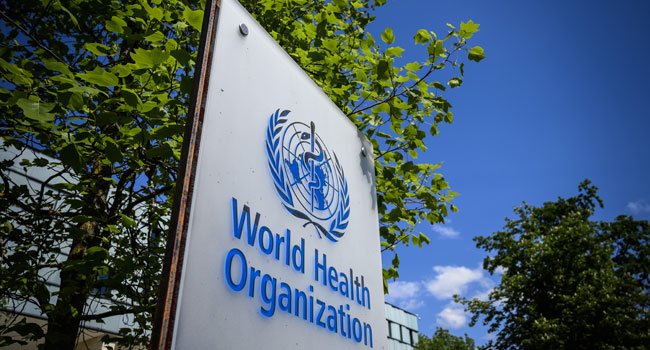The World Health Organisation (WHO) has released a new guideline aimed at preventing adolescent pregnancy and its significant related health complications.
In a statement on Wednesday, the world health body said it was in a bid to tackle the leading cause of death globally among 15 to 19-year-old girls.
It said that among other strategies, the guideline urged rapid action to end child marriage and extend girls’ schooling.
Others it said, would improve access to sexual and reproductive health services and information – all critical factors for reducing early pregnancies among teenagers around the world.
The Director of Sexual and Reproductive Health and Research at WHO, Dr Pascale Allotey said that early pregnancies can have serious physical and psychological consequences for girls and young women.
Allotey said that early pregnancies often reflect fundamental inequalities that affect their ability to shape their relationships and their lives.
“Tackling this issue therefore means creating conditions where girls and young women can thrive by ensuring they can stay in school.
“Be protected from violence and coercion, access sexual and reproductive health services that uphold their rights, and have real choices about their futures,” she said.
According to her, more than 21 million adolescent girls become pregnant each year in low and middle-income countries, around half of which are unintended.
Allotey said that with impacts on girls’ education, social connection and future employment prospects, early pregnancy can create cycles of intergenerational poverty that become difficult to break.
“It also brings serious health risks, including relatively higher rates of infections and preterm births as well as complications from unsafe abortions linked to particular challenges in accessing safe and respectful care.
“Reasons for early pregnancy are varied and interrelated, including gender inequities, poverty, lack of opportunity, and inability to access sexual and reproductive health services.
“There is a strong correlation with child marriage: in low- and middle- income countries, 9 in 10 adolescent births take place among girls who were married before the age of 18,” she said.
According to her, the guideline recommends holistic efforts to provide viable alternatives to early marriage by strengthening girls’ education, savings, and employment prospects.
“If all girls finished their secondary schooling, it has been estimated that child marriages could be reduced by as much as two thirds.
“For girls at highest risk, the guideline recommends considering incentives to support secondary school completion, such as targeted financial stipends or scholarship programmes.
“The guideline also recommends laws to prohibit marriage below the age of 18, consistent with human rights standards, and community engagement to prevent the practice,” Allotey said.
A Scientist for Adolescent Sexual and Reproductive Health at WHO, Dr Sheri Bastien said that early marriage denied girls their childhood and had severe consequences for their health.
“Education is critical to change the future for young girls, while empowering adolescents, both boys and girls, to understand consent, take charge of their health.
“They can also challenge the major gender inequalities that continue to drive high rates of child marriage and early pregnancy in many parts of the world,” Bastien said.
According to her, the recommendations highlight the need to ensure adolescents access high quality, adolescent-responsive sexual and reproductive health services including contraceptive options.
“In some countries, consent from an adult is required to access services, which is a significant barrier to their use.
“Young girls who get pregnant also need to be able to access high quality and respectful healthcare during and after pregnancy and birth, free from stigma and discrimination, as well as safe abortion care,” she said.
Bastien said that comprehensive sexuality education was essential for both boys and girls to ensure they know where to access such services and how to use different types of contraception.
“It has been shown to reduce early pregnancies, delay the onset of sexual activity, and improve adolescents’ knowledge about their bodies and reproductive health.
“This guideline updates an earlier edition of the guideline on adolescent pregnancy prevention from 2011, and focuses particularly on preventing child marriage and improving adolescents’ access to and use of contraception.
“It complements WHO’s related guidance around health services for adolescents, comprehensive sexuality education, and gender-based violence.
“Globally, there has been progress in reducing adolescent pregnancies and births.
“In 2021, an estimated one in 25 girls gave birth before the age of 20, compared to one in 15, two decades prior.
“There remains significant disparities. In some countries, close to one in 10 adolescent girls (15-19 years) give birth each year,” she said.
NAN


